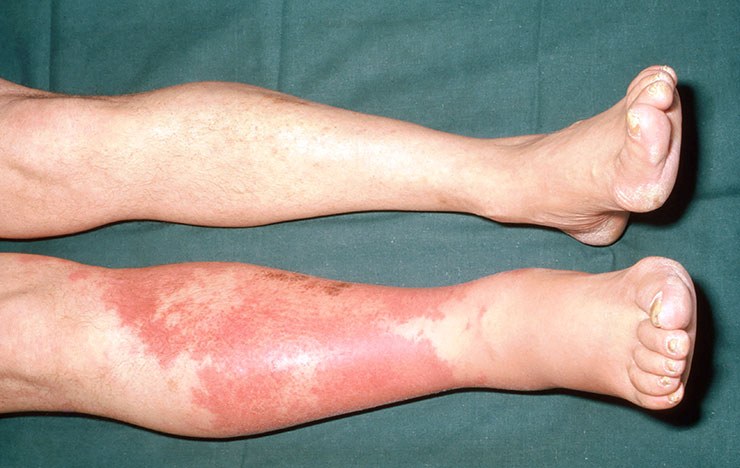CELLULITIS

What is cellulitis?
Cellulitis is a soft tissue infection characterized by a red, hot, tender area of skin and underlying tissue. The infection is acute (comes on suddenly) and spreads through the skin and deeper subcutaneous tissues. The tissue feels hard and is extremely painful to the touch. Occasionally large blisters, necrosis (dying tissue) or abscesses may form. Cellulitis may be confused with another soft tissue infection called erysipelas however cellulitis lesions are not raised or sharply defined as they are with erysipelas. Cellulitis is often associated with fatigue, fevers, chills and loss of appetite. Cellulitis surrounding the eye (periorbital) poses the risk of spreading to veins that drain the brain causing a serious complication called cavernous sinus thrombosis.
What causes cellulitis and who is at risk?
Cellulitis is caused by bacterial invasion of the soft tissue. The most common culprits are Staphylococcus aureus, Group A Streptococcus (GAS), and Hemophilus influenzae type B (HIB). HIB is more common in children. The bacteria can enter the skin through current infections (ex. ear infections), skin diseases causing open sores, traumatic cuts, bites or abrasions, surgical wounds, IV drug use and water exposure. Human or animal bites breaking the skin can also provide a portal of entry for bacteria.
After bacteria enter the skin they can spread to tissue spaces and break down the local tissue causing inflammation. All age groups are at equal risk for cellulitis and risk factors include:
- Drug and alcohol use
- Cancer chemotherapy
- Cirrhosis
- Diabetes
- Kidney disease
- Immunosuppression
- Malnutrition
How is cellulitis treated? Cellulitis is treated with antibiotic therapy. Intravenous antibiotic therapy is indicated for use in rapidly spreading infections with high fevers. In addition to antibiotic therapy, supportive cares such as rest, elevation of the affected area and pain relief may be used. Surgical intervention may be needed if an abscess forms (see Abscess).
References:
Wolff K, Johnson, RA. Fitzpatrick’s Color Atlas and Synopsis of Clinical Dermatology. Sixth Edition. 2009.


